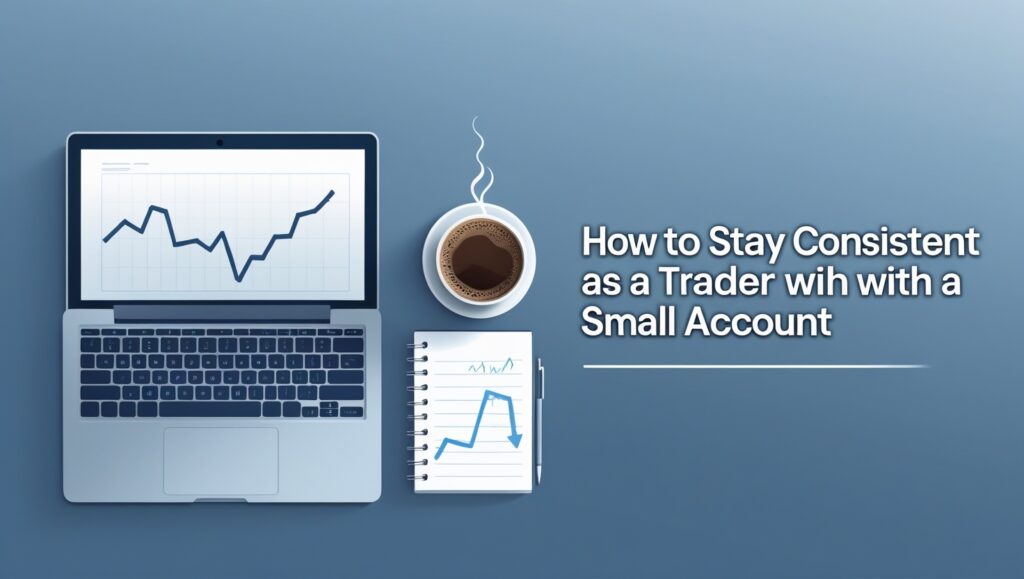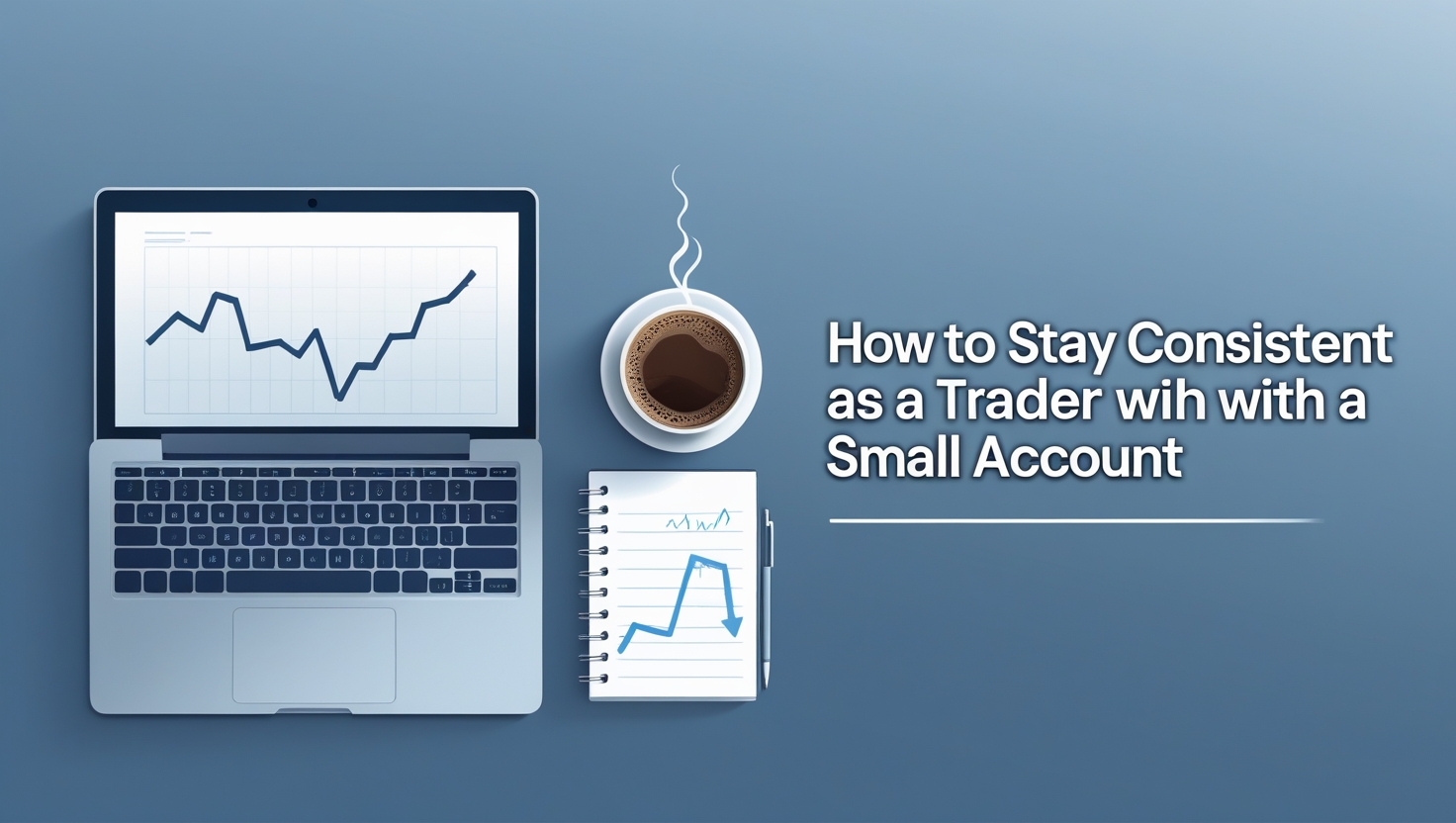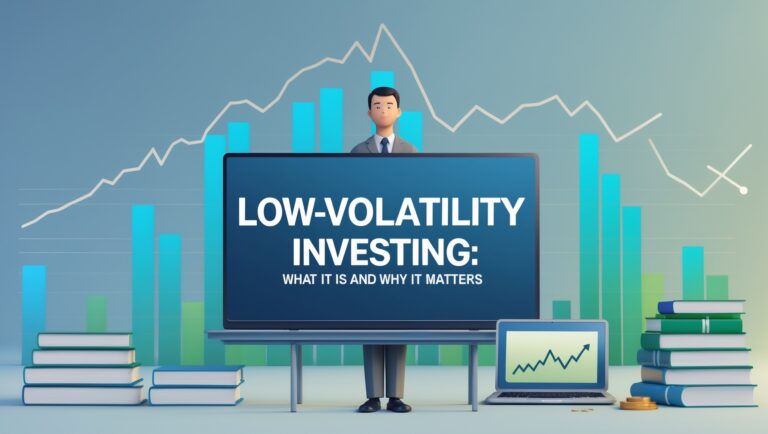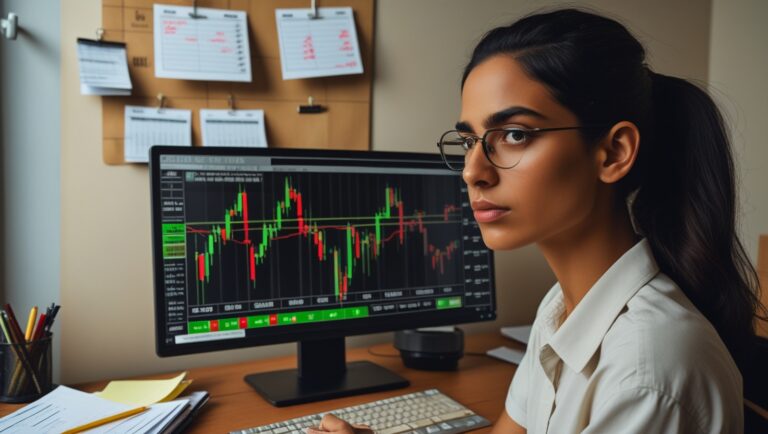How to Stay Consistent as a Trader With a Small Account
How to Stay Consistent as a Trader With a Small Account
When I first started trading, I didn’t have a big account. I wasn’t trading with $25k or fancy setups. I had to figure out how to grow a small account while still staying consistent — and not blow it all in one trade. That pressure taught me discipline fast.
In this post, I’ll walk you through exactly how I stay consistent with a small account, the strategies that work for me, and how I use a simple system to generate real monthly income with just a few quality trades a week.
If you’re serious about doing the same,
👉 Get my ebook here
where I explain how I pick trades, build my watchlist, and manage risk to help me pay my bills using stocks.

Table of Contents
Focus on High-Quality Setups Only
With a small account, I don’t have the luxury of taking 10 trades a day. So I only go after high-probability setups. That means no guessing, no chasing, and no trading out of boredom.
I wait for the setup that checks all my boxes — volume, clean levels, catalyst, and confirmation. One good trade can be enough for the week.
Keep My Watchlist Small
Every morning, I build a tight watchlist of 5–6 stocks max. This keeps me focused. I’m not flipping between 20 charts trying to find something. I already know what I’m watching and why.
This small-list strategy is the same one I teach in my ebook — because it forces you to trade with clarity, not chaos.
Use Proper Position Sizing
The worst mistake I made early on was going all-in. Now, I use small size relative to my account, and I only scale up when I’m green and the trade proves itself.
This lets me protect my account while still giving myself room to grow. Small size = lower stress = better decisions.
Always Know My Risk Before Entering
Before I enter any trade, I already know where I’ll cut it. I use tight stops, and I accept the risk before clicking buy. No surprises. No panic-selling.
This is what helped me stop blowing up and start building consistency — even with a small account.
Trade Only the Best Times of Day
I’ve learned not to force trades all day long. Most of my winning trades come within the first 30–60 minutes after the open. That’s when volume is real and setups play out.
After that, I usually stop trading. I’d rather make $100 and walk away than give it all back trying to force trades into the afternoon.
Journal Every Trade
This changed the game for me. Every trade I take gets logged — what I saw, why I entered, how I felt, what I learned. That’s how I improve. I review my journal weekly and look for patterns in my wins and losses.
Even with a small account, self-awareness can be your biggest edge.
Don’t Trade Every Day
Yes, I said it. Some days I don’t trade at all — and that’s okay. I wait for my setup. I let the market come to me. No setup? No trade.
This mindset helped me avoid losses, stay confident, and protect my small account until it grew.
Limit Overtrading
With limited capital, overtrading is your enemy. Every trade comes with risk, and commissions or slippage add up. I now ask myself: Is this trade worth it? If the answer isn’t a strong yes, I skip it.
Less is more — especially when you’re starting small.
Focus on Process Over Profits
In the beginning, I stopped looking at dollar amounts. I focused on executing my plan perfectly. That’s what led to growth. Once I nailed the process, the profits followed.
Trading is 80% mindset, and 20% execution — no matter your account size.
Let Winners Work
One thing I had to learn was to stop taking profit too early. I now scale out slowly and let the rest ride with a trailing stop. This helped me maximize my wins and make more from fewer trades.
That’s how you turn a $50 trade into a $150 win — by letting the chart speak.
Use Simple, Proven Setups
I don’t trade 20 different strategies. I stick to 2 or 3 setups that I know work. I repeat them over and over. That repetition builds consistency. And consistency builds income — even if you’re starting with $500.
My favorite setups? Breakouts over premarket highs and first pullbacks — both explained inside my ebook.
Final Thoughts
Staying consistent with a small account is possible — but only if you treat it like a business. You need structure, discipline, and patience. That’s what helped me grow, even when my capital was limited.
If you’re tired of trading blind and want a real plan that works —
👉 Download my ebook here
and I’ll show you exactly how I do it — step by step.
One thing that kept me from quitting early on was having realistic expectations. I wasn’t trying to make $1,000 a day. I was focused on growing my account slowly and protecting my capital. That shift in mindset helped me avoid gambling behavior and stay grounded.
I realized fast that trading is a game of survival. Most traders blow up not because they’re bad — but because they try to grow too fast. With a small account, I had to respect every dollar and every trade. I treated it like a job, not a hobby.
Consistency came when I started focusing on one trade a day, or even one trade every few days. I removed the pressure to perform daily and instead focused on executing one solid setup per week. That alone changed how I viewed my progress.
I also learned to separate emotions from execution. With a small account, emotions hit harder — every win feels amazing, and every loss feels personal. But once I created a routine, stuck to my rules, and accepted losses as part of the process, I became more stable.
Another strategy that helped was avoiding FOMO. It’s tempting to chase what others are trading — especially on social media. But I had to remind myself that I’m running my own race. I only take trades I understand and that fit my criteria.
As I built consistency, I found that compounding small wins was more powerful than swinging for home runs. Making $30–$50 per trade consistently added up — and most importantly, it protected my account while I leveled up.
I also leaned heavily on pre-market preparation. Every morning, I check the top gainers, look at news catalysts, and chart my levels. That 30-minute routine gives me structure — and I explain it fully inside my ebook because it’s what helped me grow.
There were days I didn’t trade but still got better. I would study the chart after the close, see how the setups played out, and log it all in my journal. That off-hours study was key to sharpening my edge without risking capital.
Eventually, I started seeing patterns repeat. I didn’t need alerts or fancy tools. Just price action, volume, and clean levels. I’d rather master 3 setups than know 30 and trade none of them well. This is how I started seeing steady results.
I also stopped trying to trade everything. I focused on stocks under $30, preferably between $2 and $15, with decent volume. This price range fits my risk profile, and I explain why in my system — which is laid out in my ebook.
Some weeks I only took one trade — but that one trade paid a bill. That’s the kind of focused, low-stress trading I aim for. I’m not chasing adrenaline. I’m trading to pay rent, pay for groceries, and keep my account alive and growing.
If you’re in the same place — small account, no flashy setup, and big goals — just know it’s possible. You just need the right plan and discipline to follow it.
👉 Download my ebook
and start with the same system that helped me go from guessing to consistent.

Stay ahead in the stock market! Subscribe to our newsletter and receive exclusive stock flow reports, trading insights, and actionable tips directly in your inbox. Join thousands of traders who get our updates first.







